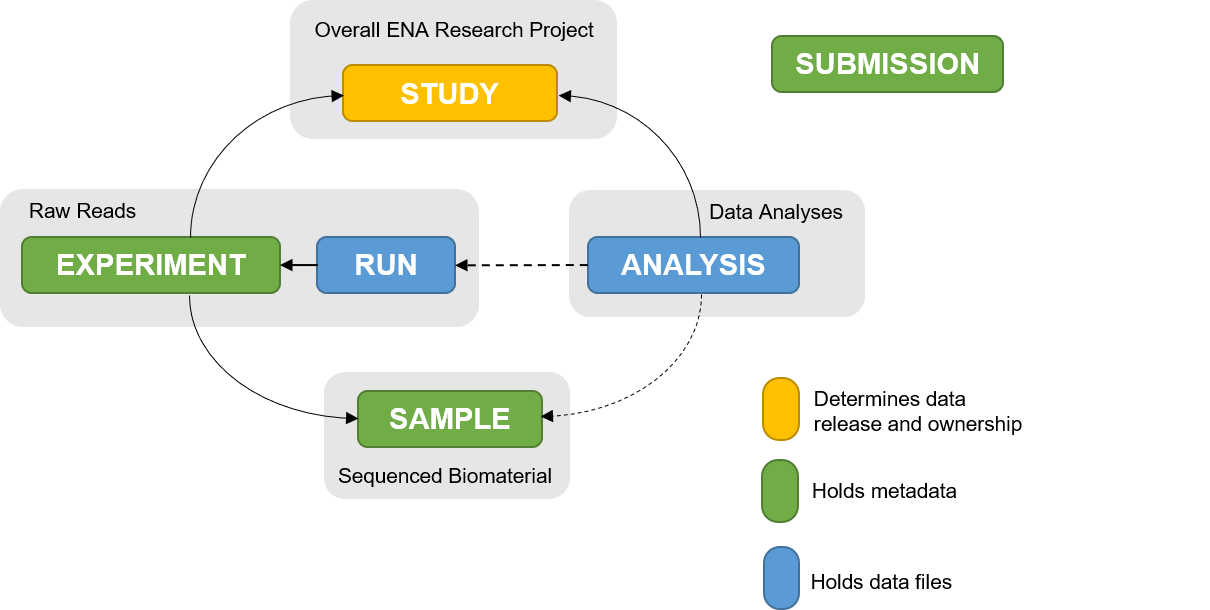The ENA Metadata Model
Submissions made through Webin are represented using a number of different metadata objects. Before submitting data to ENA, it is important to familiarise yourself with the ENA metadata model and what parts of your research project can be represented by which metadata objects. This will determine what you need to submit.
For example, a publication is typically associated with a study (project), sequenced
source material is represented using samples, and sequencing experiment details
are captured by the experiment object.
Note that data files are also submitted by associating them with metadata objects. Sequence read data is associated with run objects while other data files are associated with analysis objects. The full metadata model with relationships between the different types of objects is illustrated below.
Metadata Model

Study: A study (project) groups together data submitted to the archive and controls its release date. A study accession is typically used when citing data submitted to ENA. Note that all associated data and other objects are made public when the study is released.
Sample: A sample contains information about the sequenced source material. Samples are associated with checklists, which define the fields used to annotate the samples. Samples are always associated with a taxon.
Experiment: An experiment contains information about a sequencing experiment including library and instrument details.
Run: A run is part of an experiment and refers to data files containing sequence reads.
Analysis: An analysis contains secondary analysis results derived from sequence reads (e.g. a genome assembly).
Submission: A submission contains submission actions to be performed by the archive. A submission can add more objects to the archive, update already submitted objects or make objects publicly available.